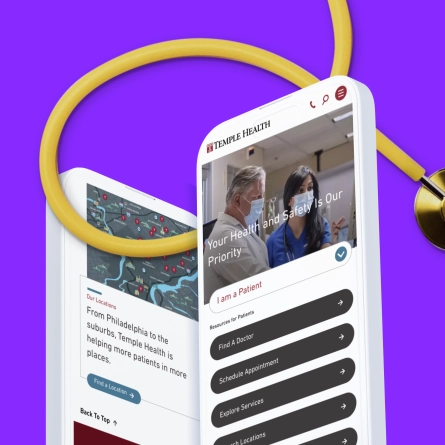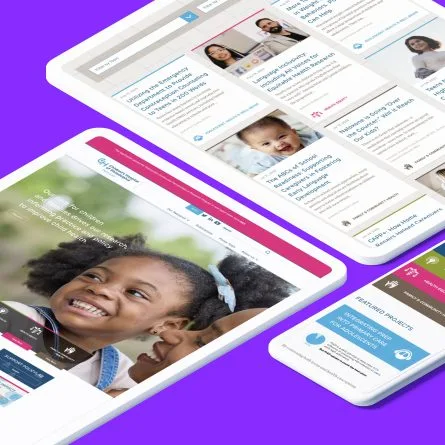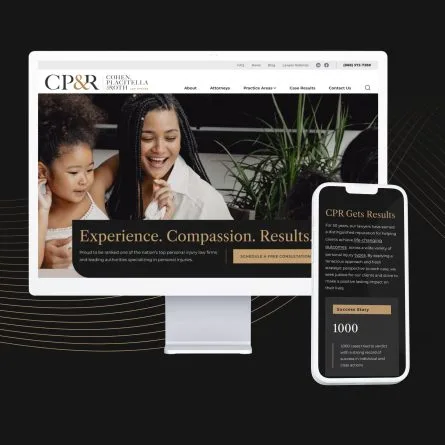U.S. Medical Licensing Examination
Better wayfinding, site architecture, and content strategy lead to healthier med student testing & portal experiences
OVERVIEW
The United States Medical Licensing Examination (USMLE) is the international gold standard in new doctor licensing: This 3-part licensing test is required for all med school grads planning to practice in the U.S.
So when it comes to their website and student portal? It’s extremely important that users understand how to navigate this high-stakes testing journey with experiences that are intuitive, reliable, and accessible to all.
USMLE BY THE NUMBERS
Project Highlights
Phase 1: A full redesign & redevelopment of their main website
Phase 2: UX & visual design upgrades for their student portal
PAIN POINTS & CHALLENGES
USMLE’s 10+ year old legacy website was not serving them well:
The visual design didn’t reflect their brand
The homepage and text-heavy secondary pages were not engaging
Overarching site & test portal navigation were confusing
UX was not intuitive, offering ill-defined different paths for different people
The site technology was outdated, and pages were hard-coded, meaning that even minor changes required IT intervention.
A transition to an updated responsive Drupal CMS platform was needed to improve design, increase efficiency, and manage content.
We needed to meet the needs and expectations of two co-sponsor stakeholder groups — The Federation of State Medical Boards (FSMB) & The National Board of Medical Examiners (NBME) — as well as five user groups: examinees, state medical boards, medical educators, test contributors & public/patients.
SOLUTIONS: STRATEGY MEETS CREATIVITY
Because the USMLE is already an essential resource for a fixed-size audience of medical students seeking a license, the project goal was to transform it into a more helpful resource, enhance overall UX, and improve engagement metrics such as reduced support inquiries and bounce rates; and increased visits, session lengths, and average page views.
Visual & UX Design
To reposition USMLE in a more favorable light for users, we created a more modern design and guided journeys that reflect the user expectations and communication preferences uncovered through a deep discovery phase.
To help new examinees prepare to successfully navigate the complex, multi-year pathway to licensure, we paid close attention to pointing them to engaging and informative materials about the process.
To make examinee user flows as clear and intuitive as possible for necessary functions — like application, payment, scheduling, score reporting and requesting transcripts — we created guided, efficient, and frictionless pathways while prioritizing structured information architecture that reduces user frustration.
Content Strategy
We wasted no time presenting the most important information right up front in an engaging way, especially for the primary audience of examinees: what USMLE is, why licensure is important, and why they have to take the tests.
Then we arranged content to lead them to FAQs that simply and quickly explain:
How to apply/register
Exam costs
Exam content
How to prepare & practice
How & when to access scores
How to obtain special accommodations, if needed
USMLE already had good information. It just needed better organization to feel useful instead of overwhelming.
To get our arms around their content collection, we conducted a comprehensive content audit. By evaluating existing all assets for context, flow, value, relevance and presentation, we were able to determine how to categorize and sequence the delivery of the information so that it guides specific types of users to where they need to go at the right time without overwhelming them. For examinees, we did this by considering where they are in the multi-year process.
Leaning into analytics data and internal discussions, we crafted a full migration plan that determined the fate of each page and file: Would it be migrated directly to the new website, be rewritten, or disappear entirely? With careful planning and documentation, we preserved the search positioning of all key pages.
Going forward, an intentional, user-focused content strategy will help USMLE:
Convey the purpose and value of licensure in a meaningful and personal way to all audience segments
Serve the needs of users
Answer FAQs
Solve problems
Inform decision-making
Drive conversions
Exam Portal Solutions
The goal for the portal was to make it easy for people to find the right test to match their stage of the testing journey, log in using integrated SSO technology, get information, and use the application. Since there are 3 tests in the USMLE series, we created 3 very clear starting points with calls to action so students don’t have to guess at where to begin — or where to go next.
In approaching the UX, we considered the intent of real-world users going through the experience of registering, taking the exam, checking the status, getting scores & more.
Working with the client’s internal team, we created mockups reflecting an updated aesthetic that more closely matched their newly defined corporate brand standards for logo, colors, and typography.
Because NBME was on an organization-wide accessibility journey, we helped them ensure equitable experiences for all users.
When the designs received final approval, we transferred them to the USMLE team for execution, ensuring they rendered as intended and reflected our vision to help the client reach their goals going forward.


